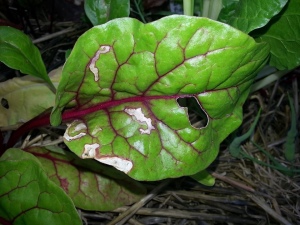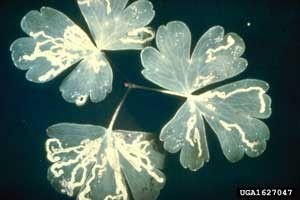
Identification
These pale green or black, stubby little maggots tunnel through leaves and cannot be seen with the naked eye, but the visible spaghetti-like patterns on the topsides of leaves are easy to identify. Eggs are laid in clusters on the undersides of leaves by tiny black flies. As many as three to four generations of flies can hatch per year. Hatching maggots burrow into the leaves to feed and then drop to the ground and pupate.
Favorite Plants
Leafminers tunnel through many ornamental and vegetable crops.
Damage
Large leaves and well established crops are usually not seriously Damaged by leafminers, but the visible tunnels can look unsightly on ornamental plants. Seedlings and plants with smaller leaves can suffer Damage or be destroyed by their tunneling.
Organic Methods of Control:
Cultural or Mechanical
- Cover seedlings with floating row covers or cheesecloth.
- Remove and destroy mined leaves and remove visible egg clusters.
- Avoid planting dock or lamb's quarters near beets. These are hosts to beet leafminers.
- Destroy crop debris and plow crops in fall to destroy pupae.
- Rotate crops.
Biological
- Attract native wasps and other predators like lady beetles and lacewings to eat eggs.
Chemical
- Spray hot pepper juice or lime spray.
- Dust plants with lime to repel flies and prevent them from laying eggs.
- Spray neem to control larvae in leaves.
Leafminers Damage

Photo By
John A. Weidhass, Virginia Polytechnic Institute and State University
